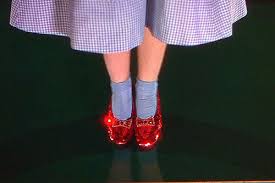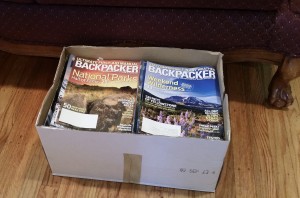My Evernote conversion occurred about five years ago. Stuffed in the back of my junk drawer (yes, I also have one) for several years, lay a handwritten recipe for the best maple balsamic salad dressing obtained from a restaurant in Vermont. Frustrated with my lack of organization for something so valuable, I downloaded Evernote and my life was forever changed.
I created a notebook in the Evernote app and titled it “Recipes,” took a photo of the recipe within the Evernote app et voila! Wherever I am, on my phone, tablet or laptop I have a screenshot of the recipe. I quickly saw how transformational this would be in both my personal and professional life. When a friend recommends a great restaurant, it goes into the notebook I created titled “Recommended Restaurants”. I also do this for movies, books, wine, travel destinations, decorating ideas. All those great details we scribble on the back of napkins never to find again.
If I’m surfing the web, I can use Evernote webclipper to clip an article or page and put it into the notebook of my choice. I can also dictate notes into Evernote and draw using the Skitch app.
I also have a notebook for each of my kids. I have a screenshot of their health insurance cards, health records, photos of their artwork from Kindergarten so I could get rid of those large poster-size monstrosities, er, I mean works of art. The list goes on.
For my business, I’m able to share notebooks with my team and with our clients. We often take notes during an organizing session and share these with our clients. Evernote also eliminates the need to email documents back and forth. Instead, the whole team can collaborate and has access whether they are working remotely or in the office to notes, documents, photos, etc.
I’m barely scratching the surface of Evernote’s endless possibilities. For more information and to create your free online account check out www.evernote.com
 Relocation is one of those infamously “stressful” times of our lives. Even those of us who are veterans will admit to the fact that the sheer amount of facets that need to be managed during a move adds some level of anxiety.
Relocation is one of those infamously “stressful” times of our lives. Even those of us who are veterans will admit to the fact that the sheer amount of facets that need to be managed during a move adds some level of anxiety.
Whether moving near or far, change is part of the package – new people, new schools, new jobs, new neighborhoods, new neighbors and yes, a new home.
My husband’s corporate job moved us (a family of five) around the U.S. for a period of over 20 years. I realized from the very beginning that this would be a way of life for our family for quite some time. In order for us to not only keep our sanity but actually enjoy the adventure, I needed to have a plan. Essentially, my plan developed from taking a step back and seeing the big picture. I asked myself:
By answering these questions, I was able to prioritize the steps of our move and create a repeatable process to carry us through each successive relocation. I hope that my answers might help you look at your own family’s needs in the face of one or multiple moves.
What will our nomadic life look like?
Truth be told, many a friend and family member worried aloud about how my children would fare growing up without the consistency of a hometown, schools and friends. I chose to envision a life that would be enhanced by our travels – my children would learn that people are people wherever you go, no matter how they look or sound. They would experience cities and environments rather than merely reading about them – things like walking on Mt. Rainier (an active volcano), battling to walk down Michigan Ave while leaning into the Chicago wind, and watching dolphins jump in the coastal waters of Florida. I shared my vision and excitement with the rest of my family and let them know how lucky we were!
What can or will change?
Almost everything! As far as living spaces were concerned however, the changes involved the size and number of rooms and the amount of storage. Would the garage be large enough for cars, bikes and storage? Would there be a basement? Would the kids each have their own rooms or will they have to double up? Some changes were welcome, others less than desirable. Adding some creative storage and decorative accents always helped with the adjustment.
What can or needs to stay the same?
I decided that since all of our surroundings including most of the people would be changing, it would be important to preserve things that gave us “roots”. With each move I kept much of our décor the same, especially for the kids. I would hang their curtains right away and keep the same bedding. Those things changed at times when they grew out of them. We would have weekly letter-writing sessions in order to maintain relationships with family and friends. This had so many benefits: family time together, honing writing skills, honing relationship skills. I also made it a point to cook traditional holiday recipes so that we wouldn’t forget our family background and would feel connected on holidays when we couldn’t actually attend in person.
What will support each family member?
This is where organization really became essential. It is difficult to be successful, in anything and at any age, if your surroundings continue to change. Therefore, I would set up each home with consistencies. Kitchens were always arranged with table settings nearest the table and furthest from my cooking area so that kids could help and not be underfoot. Drawer items in kitchen, bedrooms and bathrooms were set up in similar order from house to house. Garage and laundry bins followed suit. Within no time, everyone knew where to find what was needed regardless of the new home layout.
Even though you may move often: embrace your life, be kind to yourself and your family and you can always be living at Home.
Click on the above title to learn more about the featured author.
 Tips for getting your home ready for
Tips for getting your home ready for
OPEN HOUSE!
After the holiday rush is over and you’ve carefully packed your holiday decorations away, you may want to prepare now for spring. Spring, of course, is the perfect time to put your home up for sale.
Here are 5 tips to get your home ready that are often overlooked:
 Clean & update your trash cans and re-cycling center. This area is often neglected and you don’t want any unwanted odors lingering in the home. Recycling should be neat and handy. Take cans out on time and rinse the cans out as soon as the hoses go back outside.
Clean & update your trash cans and re-cycling center. This area is often neglected and you don’t want any unwanted odors lingering in the home. Recycling should be neat and handy. Take cans out on time and rinse the cans out as soon as the hoses go back outside.
 Get everything off the floor. Show off the square footage of your home by clearing all floors. That means: cases of water, magazines, shoes, pillows, toys, worn out rugs, and storage bins. Pick everything up off the floor. Mop and sweep often.
Get everything off the floor. Show off the square footage of your home by clearing all floors. That means: cases of water, magazines, shoes, pillows, toys, worn out rugs, and storage bins. Pick everything up off the floor. Mop and sweep often.
 Let the sunshine in by scrubbing your windows inside and out, remove heavy drapes, old shades and anything that is in the way of the windows. Natural light makes a home feel warm and cozy. If you must have window treatments, choose white.
Let the sunshine in by scrubbing your windows inside and out, remove heavy drapes, old shades and anything that is in the way of the windows. Natural light makes a home feel warm and cozy. If you must have window treatments, choose white.
 Have your bathroom and kitchen professionally cleaned. If a buyer sees dirt and mildew in these areas they will think that there is more throughout the house. Choose white whenever possible in these two areas. Add bright light bulbs, too.
Have your bathroom and kitchen professionally cleaned. If a buyer sees dirt and mildew in these areas they will think that there is more throughout the house. Choose white whenever possible in these two areas. Add bright light bulbs, too.
 Begin packing your valuables now. Neatly packed boxes in a storage area are perfectly fine when showing your home. Be sure to pack and store items with special meaning such as momentos and expensive items. Lighten up on the framed photos of your families.
Begin packing your valuables now. Neatly packed boxes in a storage area are perfectly fine when showing your home. Be sure to pack and store items with special meaning such as momentos and expensive items. Lighten up on the framed photos of your families.
STEP ONE: DOWNSIZE
Now is the time to be selective. Plan to bring only the items you really want in your new space.
STEP TWO: PACK
Packing Paper vs. Bubble Wrap
Packing Boxes vs. Plastic Tubs:
Packing boxes:
Plastic tubs:
Best Labeling Practices:
STEP THREE: UNPACK
Click on the title above to learn more about the featured author.
 Is this the year you’re planning to make your big move? Have you been saving to buy a home? Thinking about retiring and downsizing? Planning on a job change? Want to move closer to the grandkids?
Is this the year you’re planning to make your big move? Have you been saving to buy a home? Thinking about retiring and downsizing? Planning on a job change? Want to move closer to the grandkids?
Whatever the reason, there are things you can and should assess and address. One big consideration is the cost. Between packing materials, moving trucks, mileage and manpower, a relocation can run anywhere from 2- to 10-thousand dollars. While some pull it off on a shoestring and others exceed that 10K mark, it is most certainly a costly venture. So what can you do now to identify and avoid unnecessary expenses?
One thing is to take a discriminating look at what, in fact, will have to be moved. This small box of magazines weighs more than 40 lbs! At an average charge of $.50 per pound, that’s $20 (and that’s not even taking into account the labor charge for loading and unloading it). An online subscription to this Backpacker magazine is only $27…for 3 years! Are you sure these magazines, (broken printers, outgrown bikes, etc.) are worth that much to you?
Save your sanity and your budget by lightening your load now. Here are some easy target areas:
Want to know how much you’ve saved by being prepared in advance? Step on the scale with each bag or box you remove and keep track in a notebook or on your cell phone.
Whether you are using a moving company or hauling the load yourself, more stuff means more weight, more time and, bottom line, more money. Since costs incurred in any move include volume, weight and time, the less that is spent on packing and hauling your possessions, the more there will be for other discretionary expenses like unpacking, cleaning, window treatments or furniture updates.
Click on the title above to learn more about the featured author.